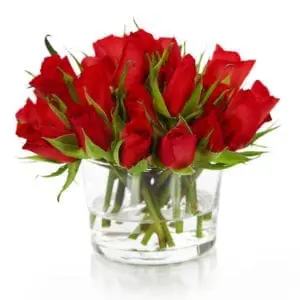A Guide to Flowers in Art
Flowers depict beauty and aesthetics. People continue to be attracted to them because they come in various colors, shapes, sizes and wonderful smells. They’re used in various celebrations and have been a vital part of culture and tradition. This is why a lot of artists continue to take inspirati ...

Flowers depict beauty and aesthetics. People continue to be attracted to them because they come in various colors, shapes, sizes and wonderful smells. They’re used in various celebrations and have been a vital part of culture and tradition.
This is why a lot of artists continue to take inspiration from flowers. Artists have captured the meaning behind each flower. Through art, a single flower could mean different things – life or death, simplicity or vanity.
Fiesta flowers offers this guide to the history of flowers in art
Lotus flower
The Lotus flower represents the sun in Ancient Egyptian mythology. It’s often used to symbolize creation. The Lotus flower is used in ceramic arts, amulets and papyrus paintings.
Millefleur Tapestries
The textile or tapestry art in the Middle Ages used floral patterns. They are called Millefleur or “thousand flowers” in French.
Primavera by Botticelli, 1470s
The art features about 190 blooms where the goddess of spring sprinkles flowers on the forest floor.
Bouquet by Brueghel, Jan the Elder, 1603
At first glance, the art shows vibrancy with its colors. But, when you look closer, you’ll notice that some flowers are bent away from the light depicting mortality.
Sunflowers by Vincent Van Gogh, 1888
Sunflowers represent happiness and vitality, although Van Gogh’s painting illustrated the concept of life and death. This was shown in how some of the flowers were upright while the rest seemed like they’re withering away.
Red Canna by Georgia O’Keeffe, 1919
The Red Canna is one of O’Keefffe’s paintings that depicted a close up view of the flower. She hoped to inspire viewers to take things slow.
Water Lilies by Claude Monet, 1920s
Monet’s Water Lilies series is a collection of about 250 oil paintings. They represent his flower garden in Giverny.
Flower Necklace by Alexander Calder, 1938
Calder is popular for creatively using wires to come up with three-dimensional art such as the Flower Necklace.
Bouquet of Peace by Pablo Picasso, 1958
Picassocreated the lithograph for the peace demonstration in Stockholm. Because of its vibrant colors, the work symbolizes a sense of hope.
Flowers by Andy Warhol, 1964
Warhol is known to find beauty in the ugly. He is also known to be fascinated with death and destruction. His Flowers series represents the beauty of colorful flowers against a background of dark disarray.
Flowers by Robert Mapplethorpe, 1980s
Mapplethorpe took simple, undistracted shots of flowers such as Poppies, Calla, Lilies and Tulips in his Flowers collection. He was first known for taking risque photos of nude men in the 70s and 80s.
Puppy by Jeff Koons, 1992
Using steel, soil and flowering plants, Jeff Koons created a 40-foot tall floral monument in the form of a topiary dog.
Field of Smiling Flowers by Takashi Murakami, 2010
Murakami created his own blooms of smiling flowers. He used 12 round petals with a smiley face in the middle. He also painted the smiling flowers beside black skulls to depict how fragile life is.
If you’d like to know more about flower in art, please contact Fiesta Flowers Plants & Gifts at https://fiestaflowersaz.com.
Recent Posts
Year : 2025
Year : 2024
Year : 2023
Year : 2022
Year : 2021
Year : 2020

